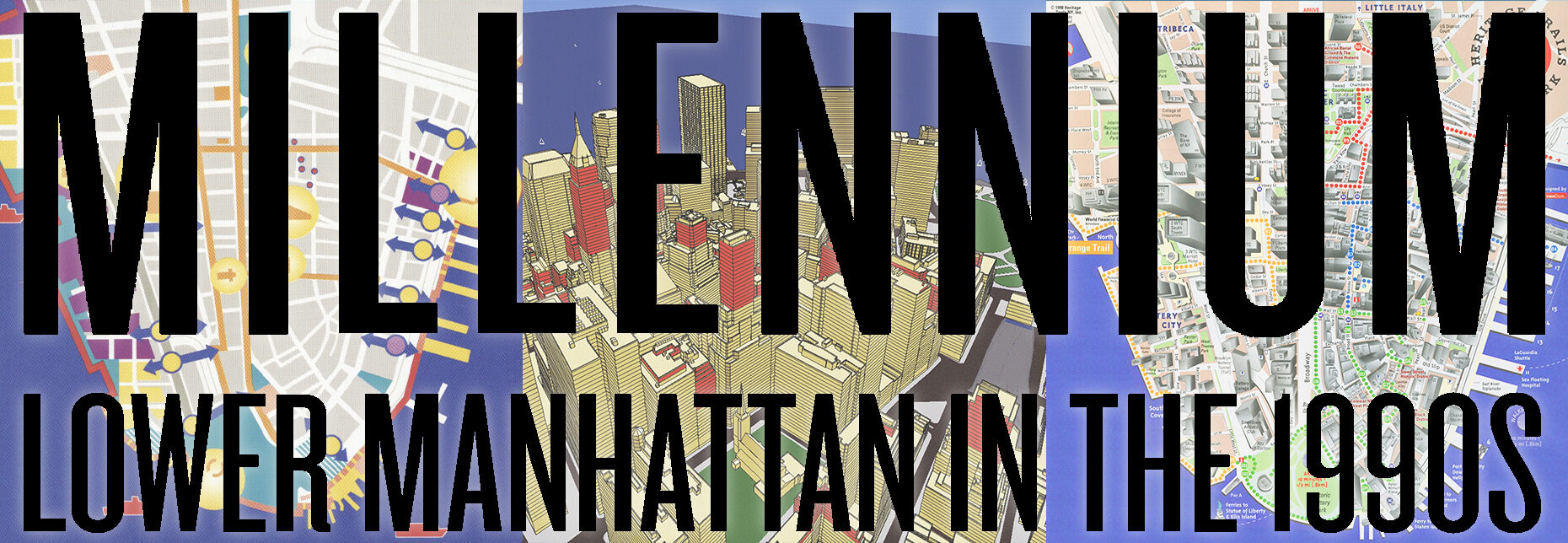HERITAGE TRAILS CHRONOLOGY
The Heritage Trails consisted of four color-coded trails, site markers located at specific historical/architectural places and a map that depicted Downtown Manhattan buildings, the trails and the sites. Richard D. Kaplan founded Heritage Trails New York (HTNY) in 1994 to “promote the history and architecture of Downtown New York City. HTNY was asked to assist in the revitalization of Downtown New York, as part of an overall strategy to make it into a 24-hour neighborhood, attract development, increase tourism, and restore it to a vital and economically viable part of New York City.” HTNY expanded the 17 sites identified in 1976 for a series of Bicentennial markers to 40. Four trails were established along routes that identified significant sites in the history of Lower Manhattan, winding through historic places, past landmarks and architecturally significant buildings to nearly every street of Downtown. All the trails started at Federal Hall, which also served as an interim visitor’s center. HTNY established the trails and provided Site Markers; it provided a way-finding system through the colonial street layout making it easier to get around Downtown; it founded a self-guided and guided Tour program; provided and staffed information kiosks in Downtown. It also integrated the trails into downtown as a new tourist attraction that united the area from a cultural and historical perspective. In 1999 HTNY transferred its assets to the Alliance for Downtown, and the organization unofficially closed in August 2002.
The following is an annotated chronology of HTNY from the establishment of the precedents, the Bicentennial Trails in 1976; the founding of HTNY in 1994; the handover of HTNY assets to the Downtown Alliance in 1999-2001, and the dissolution of the Heritage Trails organization in 2002.
1976— Precedents to the 1995 Heritage Trails
PDC Exhibition File 4153-C
In 1976 the Mayor’s Office of Lower Manhattan submitted a proposal to the Art Commission of the City of New York, the city agency charged with design approval over all city-owned property for a Heritage Trail: a self-guided tour of the sites of important historic events associated with the heritage of the City and of Lower Manhattan. The proposal consisted of a trailblazer sign, which displayed the symbol to guide tourists along the trail and a marker sign, which was a self-contained display stanchion with images and text pertaining to each site. The system was designed by Samuel Lebowitz Design & Planning and funded by the American Express Foundation. The 17 Marker Signs, which were free-standing or attached to a fence or building wall were welded aluminum structural frames with flush riveted extruded aluminum ribbed skins finished dark bronze with an information sign with a dark bronze background, bright bronze text and illustrations and a silk screened HT symbol. The Art Commission gave the project a final approval on May 10, 1976.
The original sites were: Civic Center; Printing House Square; City Hall; Woolworth Building; St. Paul’s Church; Trinity Church; Custom House; Battery Park; Harbor Islands (Ellis Island, Statue of Liberty); State Street Row/ Ferry Sites; Fraunces Tavern/ Fraunces Tavern Block; India House/Hanover Square; New York Stock Exchange/Federal Hall; Bank of New York/Citibank; Federal Reserve Bank/Chamber of Commerce; John Street Methodist Church; South Street Seaport/Brooklyn Bridge
1994-96—Planning and Implementation
In 1994 Richard D. Kaplan establishes Heritage Trails New York (HTNY), hires Nadine Peyser as Project Coordinator, Chermayeff & Geismar as graphic designers and Stephan Van Dam to create the map. The opening ceremony for Heritage Trails took place on June 27, 1995 at Federal Hall with 40-page tour booklet, colored dots on streets to mark 4 trails, tour guides known as “Trailblazers” at Battery Park, World Trade Center, South Street Seaport and Federal Hall, and a Heritage Hub and Visitors Center on the interior of Federal Hall. One prototype TrailMarker was installed at J. P. Morgan. This was the first phase of a two phase project, with the second phase (starting in 1997) being the installation of the markers.
